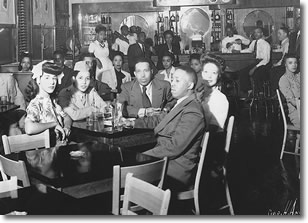Recreation and Leisure

At the turn of the century, African Americans across Tennessee began establishing their own leisure spaces. First came private urban parks. In 1899, Memphis entrepreneur Robert Reed Church opened the six-acre Church Park and Auditorium on Beale Street, the first of its kind in the country owned by an African American for use by African American patrons. Church hired W.C. Handy, now recognized as the “Father of the Blues,” as the park’s orchestra leader. In 1902, an audience of 10,000 heard President Theodore Roosevelt praise Church’s political and philanthropic prominence in the community.
In 1905, the Reverend Preston Taylor, a prominent Nashville business leader, who had established the Greenwood Cemetery for African Americans in 1888, opened his “Greenwood Recreational Park for Negroes” at the corner of Spence Lane and Lebanon Road. Seven years later, the city of Nashville created Hadley Park, the state’s first public park for African Americans, in North Nashville on the site where Frederick Douglass had delivered an address to the Third Annual Fair of the Tennessee Colored Agricultural and Mechanical Association in 1873. Douglass’s message that day: “…I feel less like dwelling on agriculture in general than calling upon you to join me in loud, earnest, joyous and long-continued cheers over our newly gained freedom.”
A new wave of segregated state parks for African Americans came during the New Deal through the Works Progress Administration. T. O. Fuller State Park (1933) is located south of downtown Memphis along the Mississippi River. Booker T. Washington State Park, north of Chattanooga on the Tennessee River (1937-1938) was constructed by Company 4497 of the Civilian Conservation Corps, a Junior African American company.
The Nashville Park Board purchased land for an African American park in East Nashville in 1935. Though the records clearly show “Douglas Park” is its official name, someone wrote in the name “Fred” in front of “Douglas” in the board’s typed notes. The park, developed by the WPA, was moved to a new site during Nashville’s 1950s urban renewal. Now located next to Meigs School, the park added a community center in 1964. The unknown origin of the park’s name later became a topic of interest among historians, community members, and public officials. In March of 2017, the park was officially renamed Frederick Douglass Park.
In 1937, the Nashville Park Board approved the WPA building plan to construct entrance gates at Hadley Park and a memorial to honor black soldiers from Davidson County who died in World War I. It contracted McKissack and McKissack, the first African-American owned architectural firm in the United States, to design the structure.